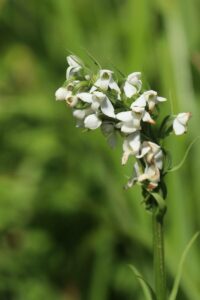Platanthera hologlottis

Unveiling the Secrets: Propagating the Elusive Platanthera hologlottis
The world of orchids is one of captivating beauty and fascinating complexity, and the Platanthera hologlottis, more commonly known as the Shiny Green Bog Orchid, is no exception. This enchanting orchid, with its vibrant green flowers gracing wetlands and bogs, is a sight to behold. But its allure goes beyond aesthetics; the Shiny Green Bog Orchid presents a propagation challenge that has captivated orchid enthusiasts and conservationists alike.
Propagating Platanthera hologlottis in a typical home setting is considered near impossible. Unlike orchids that readily produce keikis or can be multiplied through simple division, this species relies heavily on a symbiotic relationship with specific mycorrhizal fungi present in its natural environment. These fungi, invisible to the naked eye, form a mutually beneficial association with the orchid’s roots, assisting in nutrient uptake and playing a crucial role in seed germination.
The Mycorrhizal Maze:
The seeds of the Shiny Green Bog Orchid are incredibly small and lack the energy reserves found in many other plant seeds. In their natural habitat, the mycorrhizal fungi colonize the seed, providing the necessary nutrients for germination and early development. This intricate dependence makes ex-situ propagation, or propagation outside of their natural habitat, particularly challenging.
Conservation through Collaboration:
Despite the difficulties, hope remains for the conservation and propagation of the Shiny Green Bog Orchid. Researchers and botanical institutions are actively working to unravel the mysteries of this intricate orchid-fungi relationship. By isolating and cultivating the specific mycorrhizal fungi associated with Platanthera hologlottis, scientists are taking the first steps towards developing successful in vitro propagation methods. These techniques involve germinating seeds in a controlled laboratory environment on a nutrient-rich medium inoculated with the isolated fungi. While still in its early stages, this research offers a promising avenue for conservation efforts and could eventually lead to the reintroduction of this stunning orchid into threatened habitats.
Supporting Conservation Efforts:
While propagating Platanthera hologlottis at home might not be feasible, there are still ways you can contribute to its conservation.
- Support Ethical Growers: Consider adding easier-to-grow orchid species to your collection from reputable growers who prioritize sustainable practices.
- Get Involved: Participate in citizen science projects or volunteer at local botanical gardens or conservation organizations to help protect native orchid populations.
- Educate Yourself: Learn about the native orchids in your region and the threats they face. By spreading awareness, you can contribute to their preservation.
The Shiny Green Bog Orchid, with its captivating beauty and fascinating symbiotic relationship, serves as a reminder of the intricate interconnectedness of nature. While propagation remains a complex endeavor, ongoing research and conservation efforts provide hope for the future of this remarkable species. By understanding and appreciating the delicate balance within our ecosystems, we can work towards ensuring the survival of these botanical treasures for generations to come.